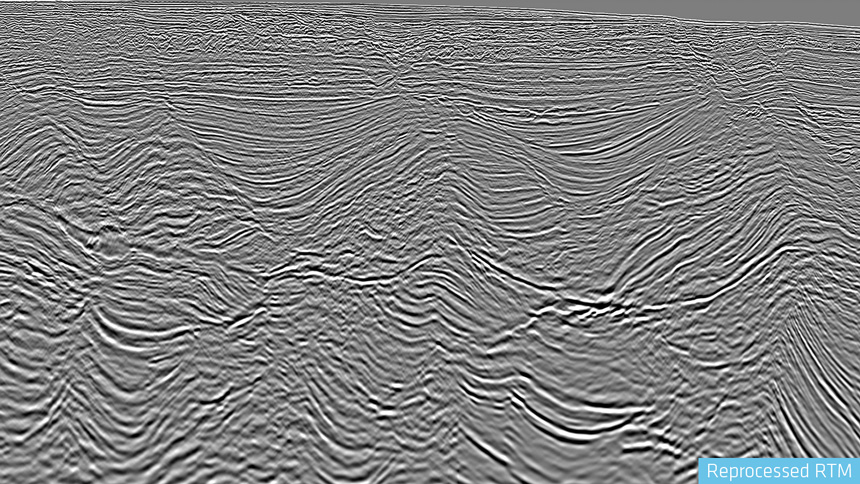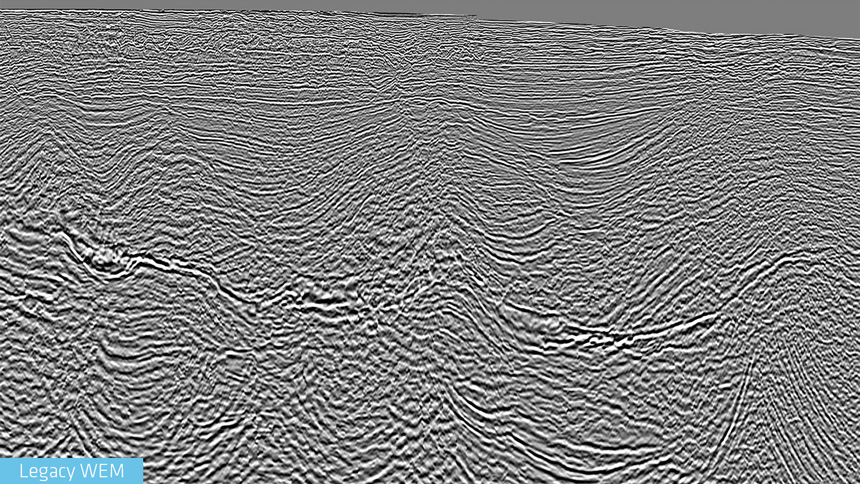PGS is reprocessing 30 000 sq. km of Flex Vision data to provide a contiguous, high-quality broadband depth dataset to solve the imaging challenges across the Flex Trend. Phase 1 is available now and covers 4 000 sq. km and Phase 2 will be available in July 2019.

Broadband Processing and Advanced Imaging Solutions
The dataset is comprised of a series of 3D streamer surveys, acquired before much of the exploration and production infrastructure was in place, and several post-infrastructure OBC surveys. Together they form a unique contiguous dataset across the Flex Trend. Re-mastering from the original field tape, followed by pre-processing including full source and receiver side deghosting and designature and application of the latest PGS demultiple flows, provides the ideal broadband input for depth imaging.
A detailed anisotropic sediment velocity model built using PGS Full Waveform Inversion (FWI) allows accurate interpretation of the top salt. Comprehensive salt scenario testing and subsalt tomography, calibrated to well information, generates a highly detailed and accurate velocity model above and below salt.
The final depth image volumes are generated using Q-Kirchhoff and Reverse Time Migration (RTM) followed by image optimization including modeled mode-converted wave attenuation and least-squares based illumination compensation.
New Potential Plays and Deep Geological Insights
The broadband Q-Kirchhoff product, with frequency content up to 90 Hz, accurately images the supra-salt section. Fault definition and the stratigraphy of the upper section are resolved such that potential oil plays are interpretable. The processing is fully AVO compliant with migrated gathers and angle stacks available for reservoir characterization. The high-resolution detail in the shallow section makes the dataset suitable for geohazard shallow gas mapping.
The high frequency RTM volume images the Miocene play fairways and clarifies the Miocene and the deeper potential in the Lower Tertiary. A structural version of the RTM is available that enables mapping of sediments terminating against salt walls and the structure of the deep section below 12 000 m (40 000 ft), giving regional context and geological understanding.
Contact a PGS expert
Please contact a member of our Gulf of Mexico team for more information.

